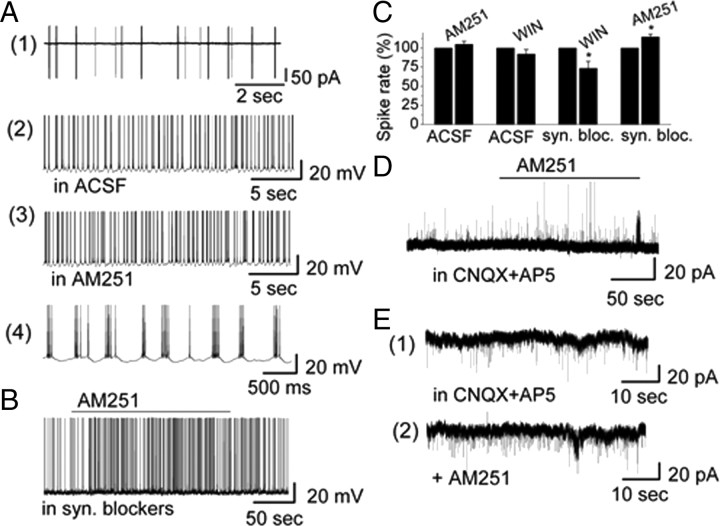Figure 2.
CB1R modified the activity of and synaptic transmission to ET cells. A(1), Extracellular recording from an ET cell in cell-attached voltage-clamp mode to initially identify ET cells by their burst firing pattern. A(2), A(3), The burst firing pattern of an ET cell recorded in absence and presence of CB1R antagonist AM251 in whole-cell current-clamp mode. The burst firing pattern of A(2) is shown at higher time resolution in A(4). B, AM251 increased the burst firing rate of an ET cell in the presence of synaptic blockers (10 μm CNQX + 50 μm d-AP5 and 5 μm gabazine). C, Group data illustrating the role of CB1R for burst firing of ET cells in absence and presence of synaptic blockers. Asterisks indicate significance level (*p < 0.05). D, AM251 induced an increase of sIPSCs in an ET cell in the presence of CNQX + d-AP5 with low-Cl−-based pipette solution. Holding potential is at 0 mV. IPSCs appeared as upward deflections. E, AM251 induced an increase of sIPSCs in ET cell in the presence of CNQX + d-AP5 with high-Cl−-based pipette solution. Holding potential was at −60 mV. sIPSCs appeared as downward deflections.

